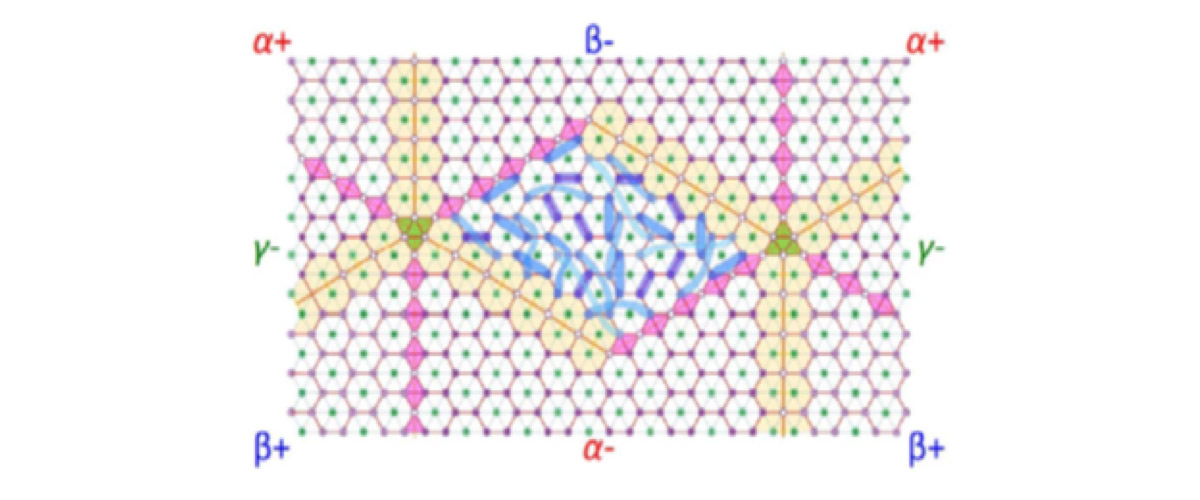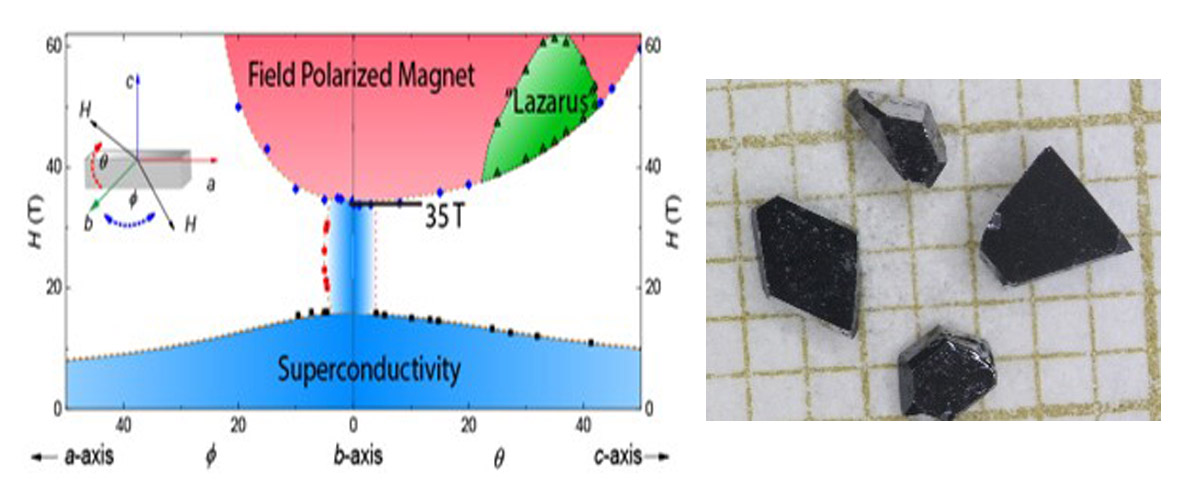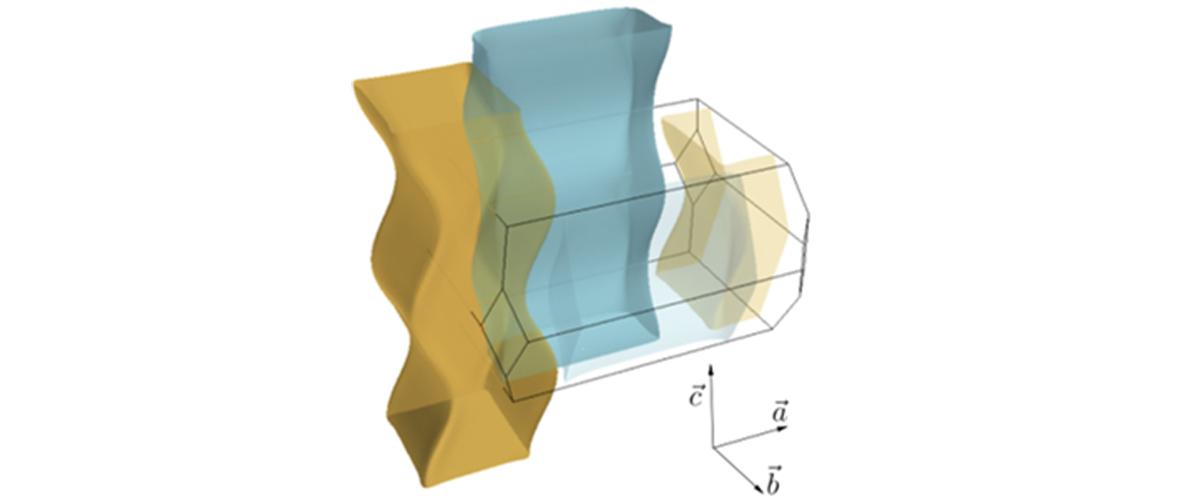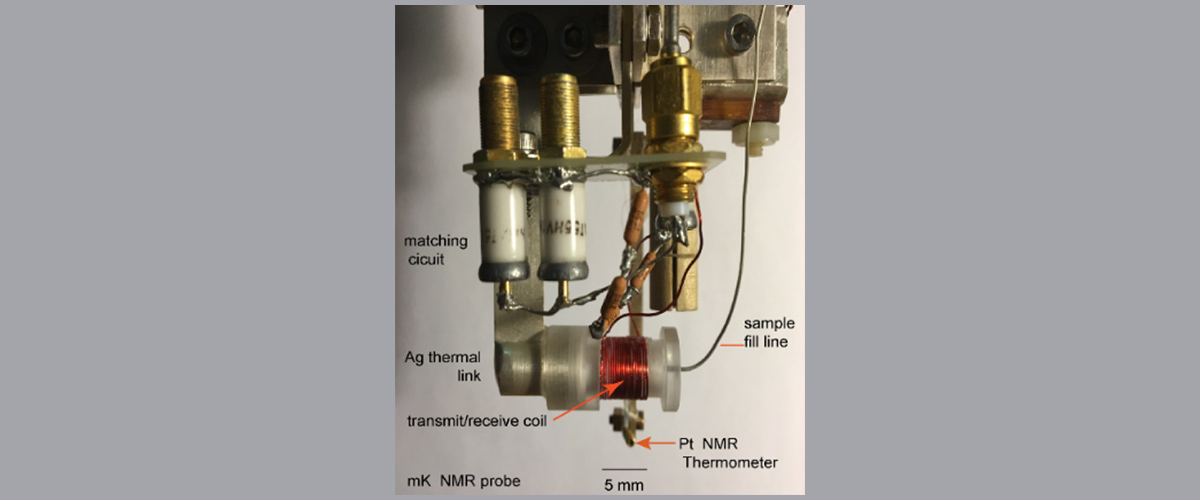What did scientists discover?
Using intense pulsed magnetic fields and measurements at low temperatures, MagLab users have found evidence of a long-sought “spin liquid” in terbium indium oxide: TbInO3. In this material, the magnetic fields of the electrons (the “spins”) have a strong tendency to want to align in opposite directions with their neighbors (called “antiferromagnetism”) but they are “frustrated”. That is because three spins on a triangle cannot anti-align with each of their two neighbors. In TbInO3, the frustrated spins instead form an unusual dynamic quantum state called a “spin liquid”. This material is unique in that it also has clean and atomically-thin grain boundaries between the spin liquid regions that can create a special state of spins coming from the edges rather than the center of the spin liquid regions.
Why is this important?
Physicists have long been seeking a material in which an elusive spin liquid state can be observed. In a spin liquid, the electrons do not move, so spin liquids are electrical insulators. However, the magnetic field orientations of the electrons, their so-called "spins", do move, behaving like a liquid of spins. As such, a spin liquid is a new form of quantum state that goes beyond ordinary static ordering of spins.
In this material, clean and atomically thin edges between spin liquid regions can host so-called "Majorana fermions", which are elusive particles that could be used for quantum computing.
Who did the research?
Jaewook Kim1, Xueyun Wang1, Fei-Ting Huang1, Yazhong Wang1, Xiaochen Fang1, Xuan Luo2, Y.Li1,3, Meixia Wu1,4, S.Mori5, D.Kwok1, Eun Deok Mun6,7, V.S. Zapf6, and Sang-Wook Cheong1,2
1Rutgers Univ; 2Max Plank POSTECH, Pohang Univ of Science and Technology; 3Shandong Univ; 4South China Univ of Technology, 5Osaka Prefecture Univ; 6National Maglab-Pulsed Field Facility, LANL; 7Simon Fraser Univ, Canada
Why did they need the MagLab?
The magnetic properties needed to be measured up to 60T to rule out magnetic ordering, to identify the crystal electric field levels to determine the magnetic state of the Tb atoms, and to fit the data to relevant theoretical models.
Details for scientists
- View or download the expert-level Science Highlight, Spin Liquid "Lakes" with Topologically-Interesting Edge States in TbInO3
- Read the full-length publication, Spin liquid state and topological structural defects in hexagonal TbInO3, in Phys. Rev. X
Funding
This research was funded by the following grants: G.S. Boebinger (NSF DMR-1157490,1644779)
For more information, contact Laurel Winter.






